| Season Start: | 05 January 1985 | | Season End: | 30 March 1985 | | Season Length: | 13 Weeks | | Writers: | Eric Saward, Glen McCoy, Paula Moore, Philip Martin, Pip and Jane Baker and Robert Holmes | | Directors: | Graeme Harper, Matthew Robinson, Pennant Roberts, Peter Moffatt, Ron Jones and Sarah Hellings | | Producer: | John Nathan-Turner | | Script Editor: | Eric Saward | | Visual Effects: | Charles Jeanes, Chris Lawson, David Barton, John Brace, Kevin Molloy and Steven Drewett | | Title Sequence: | Sid Sutton and Terry Handley | | Title Music: | Ron Grainer and the BBC Radiophonic Workshop. Arranged by Peter Howell |
|
Incarnation of the Doctor: |
The Sixth Doctor
|
|
Other Incarnations of the Doctor: |
The Second Doctor (Returns) |
| Number of
Companions: |
2 |
| The
Companions: |
Jamie McCrimmon (Rejoins and Departs) and Peri
|
| Number of
Acquaintances: |
1
|
| The
Acquaintances: |
Lytton
|
| Number of
Stories: |
6
|
| Number of
Incomplete/Missing Stories: |
0
|
| Number of
Episodes: |
13
|
| Number of
Incomplete/Missing Episodes: |
0
|
| Percentages: |
| Full Stories Held | 100% | | Episodes Held | 100% |
|
| Doctor Who Magazine Poll (1998) | | | Doctor Who Magazine Poll (2009) | | | Doctor Who Magazine Poll (2014) | |
|
 'He wears yellow trousers and a vulgarly coloured coat, but tread carefully - he's treacherous' 'He wears yellow trousers and a vulgarly coloured coat, but tread carefully - he's treacherous'
The Master (Speaking of The Doctor)
(The Mark of The Rani) |
|
|
|
|
| |
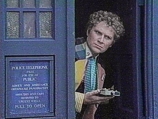 |
| The Sixth Doctor |
|
 Season Twenty Two was the first full season for Colin Baker as the Sixth Doctor. In many respects it could be considered to be beginning of the Sixth Doctor’s era, even though his first story, "The Twin Dilemma" was the last story of Season Twenty One. But because "The Twin Dilemma" is considered by many fans to be one of the least liked stories it is easy to see why the Sixth Doctor’s first story is sometimes forgotten and that the first story of this season, "Attack of the Cybermen", is more like his first – especially as the opening sequences between The Doctor and his travelling companion, Peri, contains many references to The Doctor’s recent regeneration. Season Twenty Two was the first full season for Colin Baker as the Sixth Doctor. In many respects it could be considered to be beginning of the Sixth Doctor’s era, even though his first story, "The Twin Dilemma" was the last story of Season Twenty One. But because "The Twin Dilemma" is considered by many fans to be one of the least liked stories it is easy to see why the Sixth Doctor’s first story is sometimes forgotten and that the first story of this season, "Attack of the Cybermen", is more like his first – especially as the opening sequences between The Doctor and his travelling companion, Peri, contains many references to The Doctor’s recent regeneration.
 One of the most notable changes to the show, that occurred with this season, was that after just three years the show returned to its traditional Saturday teatime slot. But the biggest change that occurred in this season was the length of the episodes. Since the show began in 1963, with the First Doctor story "An Unearthly Child", and apart from the Twentieth Anniversary special, "The Five Doctors" and the 1984 Fifth Doctor story "Resurrection of the Daleks", the standard length of an episode had been twenty five minutes. However, all the stories for Season Twenty Two were forty five minutes long. One of the most notable changes to the show, that occurred with this season, was that after just three years the show returned to its traditional Saturday teatime slot. But the biggest change that occurred in this season was the length of the episodes. Since the show began in 1963, with the First Doctor story "An Unearthly Child", and apart from the Twentieth Anniversary special, "The Five Doctors" and the 1984 Fifth Doctor story "Resurrection of the Daleks", the standard length of an episode had been twenty five minutes. However, all the stories for Season Twenty Two were forty five minutes long.
 After the initial burst of interest in the Fifth Doctor era (in which the frequency of broadcast was increased to twice a week) the ratings for the show had been fairly tepid. Therefore with Season Twenty Two it was decided to return Doctor Who to its traditional Saturday evening slot, but with thirteen 45 minute episodes instead of the usual twenty six episodes of 25 minutes duration. A successful experiment broadcasting "Resurrection of the Daleks" this way in the previous season, to accommodate the Winter Olympics, merely substantiated the plan. It was though soon discovered that the process of writing for the new duration was a much larger adjustment (especially in terms of pacing) than merely combining two standard episodes together to create a 45 minute episode. After the initial burst of interest in the Fifth Doctor era (in which the frequency of broadcast was increased to twice a week) the ratings for the show had been fairly tepid. Therefore with Season Twenty Two it was decided to return Doctor Who to its traditional Saturday evening slot, but with thirteen 45 minute episodes instead of the usual twenty six episodes of 25 minutes duration. A successful experiment broadcasting "Resurrection of the Daleks" this way in the previous season, to accommodate the Winter Olympics, merely substantiated the plan. It was though soon discovered that the process of writing for the new duration was a much larger adjustment (especially in terms of pacing) than merely combining two standard episodes together to create a 45 minute episode.
 Despite having only six stories, and with only thirteen episodes (which is equivalent to 26 twenty five minute episodes), this season’s total running time remained approximately the same as in the majority of seasons since Season Nine, due to the episodes being almost twice as long. Interestingly, despite Producer John Nathan-Turner disliking the length of six-part stories, "The Two Doctors", being three episodes long, is nearly the same length as a six-part story. Despite having only six stories, and with only thirteen episodes (which is equivalent to 26 twenty five minute episodes), this season’s total running time remained approximately the same as in the majority of seasons since Season Nine, due to the episodes being almost twice as long. Interestingly, despite Producer John Nathan-Turner disliking the length of six-part stories, "The Two Doctors", being three episodes long, is nearly the same length as a six-part story.
 The experiment to increase the length of the episodes however, did not result in improved ratings. Even so this season was still watched by 7.1 million viewers – which is the same as the previous two seasons. This is the only season, during the original run of the show, where the episodes were forty five minutes long. As of the next season the episode lengths reverted back to being twenty five minutes long and it would not be until the show was revived, in 2005, that the standard length of an episode would once again be forty five minutes. The experiment to increase the length of the episodes however, did not result in improved ratings. Even so this season was still watched by 7.1 million viewers – which is the same as the previous two seasons. This is the only season, during the original run of the show, where the episodes were forty five minutes long. As of the next season the episode lengths reverted back to being twenty five minutes long and it would not be until the show was revived, in 2005, that the standard length of an episode would once again be forty five minutes.
 Unfortunately for many this season is seen as the darkest period, in tone, of the show’s history. Many of the stories were criticised for being to violent. Especially regarding to the following scenes: In "Attack of the Cybermen" we witness Cybermen killing people with their bare hands; In "Vengeance on Varos" there are numerous scenes of torture as well as the infamous acid bath scene (The Doctor though does not actually push the guards into the acid but the fact that he does not react with horror, but instead tosses off a quip, unfortunately, exacerbates the controversy); There is no doubt that "The Two Doctors" is one of the most violent in the show’s history. During this story there are multiple stabbings and knife wounds, blood spillage (Human, Time Lord and Sontaran) and the attempted cooking and eating of humans. The Doctor is even seen killing Shockeye (all-be-it in self-defence) with cyanide. The increased violence in these stories therefore added to the ongoing media criticism over the level of violence in the Sixth Doctor’s era. Unfortunately for many this season is seen as the darkest period, in tone, of the show’s history. Many of the stories were criticised for being to violent. Especially regarding to the following scenes: In "Attack of the Cybermen" we witness Cybermen killing people with their bare hands; In "Vengeance on Varos" there are numerous scenes of torture as well as the infamous acid bath scene (The Doctor though does not actually push the guards into the acid but the fact that he does not react with horror, but instead tosses off a quip, unfortunately, exacerbates the controversy); There is no doubt that "The Two Doctors" is one of the most violent in the show’s history. During this story there are multiple stabbings and knife wounds, blood spillage (Human, Time Lord and Sontaran) and the attempted cooking and eating of humans. The Doctor is even seen killing Shockeye (all-be-it in self-defence) with cyanide. The increased violence in these stories therefore added to the ongoing media criticism over the level of violence in the Sixth Doctor’s era.
 What was not obvious at the time was that Colin Baker was forced to play the Sixth Doctor as being rather unstable. The idea being that his incarnation would be in sharp contrast to his generally more amiable predecessors and so who would initially be a source of suspicion for the audience. Consequently, the Sixth Doctor would appear to be erratic and untrustworthy - but, in principle at least, would eventually earn the viewer’s faith and respect. What was not obvious at the time was that Colin Baker was forced to play the Sixth Doctor as being rather unstable. The idea being that his incarnation would be in sharp contrast to his generally more amiable predecessors and so who would initially be a source of suspicion for the audience. Consequently, the Sixth Doctor would appear to be erratic and untrustworthy - but, in principle at least, would eventually earn the viewer’s faith and respect.
 Continuing with him on his journeys was Peri (played by Nicola Bryant). She would continue throughout this season and would remain The Doctor’s only permanent travelling companion. During this season the relationship between The Doctor and Peri would be tested and it is a credit to Nicola Bryant that her character stayed loyal to The Doctor. Continuing with him on his journeys was Peri (played by Nicola Bryant). She would continue throughout this season and would remain The Doctor’s only permanent travelling companion. During this season the relationship between The Doctor and Peri would be tested and it is a credit to Nicola Bryant that her character stayed loyal to The Doctor.
 As well as facing the Cybermen, the return of the Sontarans (after an absence of seven years), Davros and two factions of Daleks, this season introduced some new enemies for The Doctor to defeat. Of the most significant was The Rani - a malevolent, scientifically-minded Time Lady who became involved with The Master in his quest to defeat The Doctor. Also making their debut appearances were the bloodthirsty Androgums, and the villainous Sil (from Thoros-Beta) - the later of which would return during the following season. The Rani herself would make a return to the show in the Seventh Doctor’s first story "Time and The Rani". As well as facing the Cybermen, the return of the Sontarans (after an absence of seven years), Davros and two factions of Daleks, this season introduced some new enemies for The Doctor to defeat. Of the most significant was The Rani - a malevolent, scientifically-minded Time Lady who became involved with The Master in his quest to defeat The Doctor. Also making their debut appearances were the bloodthirsty Androgums, and the villainous Sil (from Thoros-Beta) - the later of which would return during the following season. The Rani herself would make a return to the show in the Seventh Doctor’s first story "Time and The Rani".
 The most significant thing about this season was the Sixth Doctor and Peri were aided by The Doctor’s second incarnation (played by Patrick Troughton) and his former companion Jamie McCrimmon (played by Frazer Hines). In "The Two Doctors" both played a significant part in defeating the Sontarans and the Androgums. It was a joy to see the Second Doctor interacting with his Sixth incarnation and with Shockeye. The most significant thing about this season was the Sixth Doctor and Peri were aided by The Doctor’s second incarnation (played by Patrick Troughton) and his former companion Jamie McCrimmon (played by Frazer Hines). In "The Two Doctors" both played a significant part in defeating the Sontarans and the Androgums. It was a joy to see the Second Doctor interacting with his Sixth incarnation and with Shockeye.
 "The Two Doctors" is the fourth story to include the Sontarans and is also the fourth to have its location footage being recorded abroad - this time in Seville, Spain. "The Two Doctors" though is one of only a few multi-Doctor stories but it has though achieved notoriety amongst Doctor Who fans because writer Robert Holmes decided to eschew established continuity and portrayed the Second Doctor and Jamie as working directly for the Time Lords, with Jamie being aware of The Doctor’s background - despite this only being revealed in the Second Doctor’s final story, "The War Games", where he is forced to regenerate as a punishment by the Time Lords. "The Two Doctors" is the fourth story to include the Sontarans and is also the fourth to have its location footage being recorded abroad - this time in Seville, Spain. "The Two Doctors" though is one of only a few multi-Doctor stories but it has though achieved notoriety amongst Doctor Who fans because writer Robert Holmes decided to eschew established continuity and portrayed the Second Doctor and Jamie as working directly for the Time Lords, with Jamie being aware of The Doctor’s background - despite this only being revealed in the Second Doctor’s final story, "The War Games", where he is forced to regenerate as a punishment by the Time Lords.
 This season though would contain the final appearance of the Sontarans in the original run of the show (they would eventually make a come-back in the 2008 Tenth Doctor story "The Sontaran Stratagem/The Poison Sky"). This season would also contain the last story to be filmed abroad until the 1996 Eighth Doctor film, "Doctor Who: The Movie". This season though would contain the final appearance of the Sontarans in the original run of the show (they would eventually make a come-back in the 2008 Tenth Doctor story "The Sontaran Stratagem/The Poison Sky"). This season would also contain the last story to be filmed abroad until the 1996 Eighth Doctor film, "Doctor Who: The Movie".
 But more significantly this season has the final appearance, in the show, for both Patrick Troughton and Frazer Hines. Although Patrick Troughton expressed the desire to continue an involvement in the show this never transpired and unfortunately, he suffered a fatal heart attack on the 28th March 1987, while attending a Doctor Who convention in Columbus, Georgia. But more significantly this season has the final appearance, in the show, for both Patrick Troughton and Frazer Hines. Although Patrick Troughton expressed the desire to continue an involvement in the show this never transpired and unfortunately, he suffered a fatal heart attack on the 28th March 1987, while attending a Doctor Who convention in Columbus, Georgia.
 Despite being the Sixth Doctor’s first full season, the return of the Second Doctor and all the media criticism over the level of violence, all this was overshadowed by the sudden announcement, half way through the season, that Doctor Who would be put on hold for a year. Much controversy still surrounds this period and the action taken, with disputes over whether or not the show was facing cancellation outright at this stage, and the roles of various BBC officials such as BBC One controller Michael Grade and Head of Drama Serials Jonathan Powell. Despite being the Sixth Doctor’s first full season, the return of the Second Doctor and all the media criticism over the level of violence, all this was overshadowed by the sudden announcement, half way through the season, that Doctor Who would be put on hold for a year. Much controversy still surrounds this period and the action taken, with disputes over whether or not the show was facing cancellation outright at this stage, and the roles of various BBC officials such as BBC One controller Michael Grade and Head of Drama Serials Jonathan Powell.
 This sudden announcement even meant that the ending of the final story, "Revelation of the Daleks", had to be hastily re-edited to it ending with The Doctor saying the letter ‘B’ followed by a freeze frame – instead of the intended word ‘Blackpool’ as part of The Doctor’s line, ‘I know, I'll take you to...’. This had intended to be a lead into the following planned story, "The Nightmare Fair", that would have been set in Blackpool and would have featured the return of Michael Gough, as the Celestial Toymaker. But "The Nightmare Fair", along with all the planned stories for the original Season Twenty Three, was shelved. This sudden announcement even meant that the ending of the final story, "Revelation of the Daleks", had to be hastily re-edited to it ending with The Doctor saying the letter ‘B’ followed by a freeze frame – instead of the intended word ‘Blackpool’ as part of The Doctor’s line, ‘I know, I'll take you to...’. This had intended to be a lead into the following planned story, "The Nightmare Fair", that would have been set in Blackpool and would have featured the return of Michael Gough, as the Celestial Toymaker. But "The Nightmare Fair", along with all the planned stories for the original Season Twenty Three, was shelved.
 This was a sad time for the show and after a continuous run of seasons the inevitable had finally happened. At first it was thought that the show had been cancelled altogether and so fan campaigns to save Doctor Who were quickly underway and these were soon joined by various media outlets. The huge outcry even resulted in a single called "Doctor In Distress" being released. It featured the voices of Colin Baker, Nicola Bryant, Anthony Ainley, Nicholas Courtney, and a host of other British entertainers, under the collective name "Who Cares?". This was a sad time for the show and after a continuous run of seasons the inevitable had finally happened. At first it was thought that the show had been cancelled altogether and so fan campaigns to save Doctor Who were quickly underway and these were soon joined by various media outlets. The huge outcry even resulted in a single called "Doctor In Distress" being released. It featured the voices of Colin Baker, Nicola Bryant, Anthony Ainley, Nicholas Courtney, and a host of other British entertainers, under the collective name "Who Cares?".
 The fan campaign continued to wage throughout the hiatus, but one bright spot for fans was the decision by BBC Radio 4 to air a six-part Doctor Who story, the first time the programme had ever been broadcast on radio. Entitled "Slipback", the audio adventure was written by Eric Saward and featured Colin Baker and Nicola Bryant, battling both a crazed spaceship captain, who threatened to unleash a deadly virus on his crew, and a schizophrenic computer that wanted to restructure the Universe. "Slipback" was broadcast between the 25th July and the 8th August 1985, with two episodes being transmitted per week. The fan campaign continued to wage throughout the hiatus, but one bright spot for fans was the decision by BBC Radio 4 to air a six-part Doctor Who story, the first time the programme had ever been broadcast on radio. Entitled "Slipback", the audio adventure was written by Eric Saward and featured Colin Baker and Nicola Bryant, battling both a crazed spaceship captain, who threatened to unleash a deadly virus on his crew, and a schizophrenic computer that wanted to restructure the Universe. "Slipback" was broadcast between the 25th July and the 8th August 1985, with two episodes being transmitted per week.
 Although frequently called the ‘18-month hiatus’, the broadcast of the first story of Season Twenty Three was only delayed by about nine months. But despite this the show suffered considerable and the Sixth Doctor’s era would become the most disjointed. Although frequently called the ‘18-month hiatus’, the broadcast of the first story of Season Twenty Three was only delayed by about nine months. But despite this the show suffered considerable and the Sixth Doctor’s era would become the most disjointed.
 Season Twenty Two had started with high hopes that the show would regain its huge popularity but despite some interesting introductions it finished with many loyal fans wondering if the show would even return, and many other viewers, unfortunately, no longer caring. Season Twenty Two had started with high hopes that the show would regain its huge popularity but despite some interesting introductions it finished with many loyal fans wondering if the show would even return, and many other viewers, unfortunately, no longer caring.
|
|
|
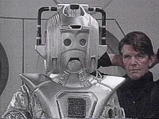 |
| Lyton and the Cyber Leader |
|
 If you enjoyed last season’s "Resurrection of the Daleks", and the involvement Lyton had in that story, then you would have been pleased to see that Lyton making a return in "Attack of the Cybermen". This story also sees the return of the Cyber Controller. The first episode of this story also contains some humorous scenes - especially between The Doctor and Peri. If you enjoyed last season’s "Resurrection of the Daleks", and the involvement Lyton had in that story, then you would have been pleased to see that Lyton making a return in "Attack of the Cybermen". This story also sees the return of the Cyber Controller. The first episode of this story also contains some humorous scenes - especially between The Doctor and Peri.
 While in "Vengeance on Varos" the scheming Sil (from Thoros-Beta) makes his first of two appearances in the show. The next story, "The Mark of The Rani", sees the return of The Master who is doing all he can to once again humiliate The Doctor. This story also introduces The Rani - the villainous female Time Lord who is a brilliant biochemist and an exile from Gallifrey. When The Rani discovers that both The Master and The Doctor have arrived, in Nineteenth Century England at the dawn of the industrial revolution and so could risk her whole operation on Earth, she is obviously less than happy. While in "Vengeance on Varos" the scheming Sil (from Thoros-Beta) makes his first of two appearances in the show. The next story, "The Mark of The Rani", sees the return of The Master who is doing all he can to once again humiliate The Doctor. This story also introduces The Rani - the villainous female Time Lord who is a brilliant biochemist and an exile from Gallifrey. When The Rani discovers that both The Master and The Doctor have arrived, in Nineteenth Century England at the dawn of the industrial revolution and so could risk her whole operation on Earth, she is obviously less than happy.
 This story is followed by "The Two Doctors" which not only sees the return of the Sontarans but also includes the one-off appearance of the Second Doctor and his companion Jamie McCrimmon. Look out for the scene when the two incarnations of The Doctor finally meet each other. This story is followed by "The Two Doctors" which not only sees the return of the Sontarans but also includes the one-off appearance of the Second Doctor and his companion Jamie McCrimmon. Look out for the scene when the two incarnations of The Doctor finally meet each other.
 The final story "Revelation of the Daleks" sees the welcome return of the Daleks and their creator the evil Davros (masquerading as ‘The Great Healer’). This story also introduces the concept of two factions of Daleks - those created by Davros and those loyal to the Supreme Dalek - who end up in a pitch battle in the corridors of Tranquil Repose on the planet Necros. The final story "Revelation of the Daleks" sees the welcome return of the Daleks and their creator the evil Davros (masquerading as ‘The Great Healer’). This story also introduces the concept of two factions of Daleks - those created by Davros and those loyal to the Supreme Dalek - who end up in a pitch battle in the corridors of Tranquil Repose on the planet Necros.
|
|
|
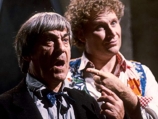 |
| The Second and Sixth Doctors |
|
 No story really stands out as one that could be considered as a must see. Even the better stories contain faults or elements that could be criticised. But having said that this season still contains some memorable stories and scenes - especially this season starts with a Cyberman story, "Attack of the Cybermen", includes the return of the Sontarans in "The Two Doctors" and ends with the Daleks and Davros in "Revelation of the Daleks". Any story containing the Daleks, Davros, Cybermen or Sontarans instantly becomes of greater interest to fans of the show. No story really stands out as one that could be considered as a must see. Even the better stories contain faults or elements that could be criticised. But having said that this season still contains some memorable stories and scenes - especially this season starts with a Cyberman story, "Attack of the Cybermen", includes the return of the Sontarans in "The Two Doctors" and ends with the Daleks and Davros in "Revelation of the Daleks". Any story containing the Daleks, Davros, Cybermen or Sontarans instantly becomes of greater interest to fans of the show.
 At the time of broadcast the Cybermen and Dalek stories both had higher viewer figures than the other stories for this season with "Attack of the Cybermen", being watched slightly more than "Revelation of the Daleks". "Attack of the Cybermen" was watched by 8 million viewers while "Revelation of the Daleks" was watched by 7.6 million viewers. As well as being the first story of the season "Attack of the Cybermen" is, for the most part, and enjoyable story but suffers from trying to include too many references, and continuity elements, from the show’s past. However, since this story was broadcast it has not fared very well in the Doctor Who Magazine polls. While "Revelation of the Daleks", in these polls, has since been voted as the best story of this season. At the time of broadcast the Cybermen and Dalek stories both had higher viewer figures than the other stories for this season with "Attack of the Cybermen", being watched slightly more than "Revelation of the Daleks". "Attack of the Cybermen" was watched by 8 million viewers while "Revelation of the Daleks" was watched by 7.6 million viewers. As well as being the first story of the season "Attack of the Cybermen" is, for the most part, and enjoyable story but suffers from trying to include too many references, and continuity elements, from the show’s past. However, since this story was broadcast it has not fared very well in the Doctor Who Magazine polls. While "Revelation of the Daleks", in these polls, has since been voted as the best story of this season.
 While "The Two Doctors" contains the return of another iconic Doctor Who monster, the Sontarans, it is for the very welcome inclusion of a previous incarnation of The Doctor and a previous companion that makes this story stand out. Of all the previous incarnations that the Doctor Who production team could have chosen they went for the popular Second Doctor (as played by Patrick Troughton) who was accompanied by Frazer Hines, as Jamie McCrimmon. Unfortunately this story has a very high death count making it a rather violent story. That and the over the top portrayal of the Androgums (and especially the food crazy Shockeye) the return of the Second Doctor and Jamie - there last appearance in the show - is rather overshadowed. The inclusion of the race of Androgums, with their passion for food and that fact that humans are seen as being part of their menu, resulted in a number of unpalatable scenes - especially when Shockeye eyes up Jamie with his butchers knife and The Doctor killing Shockeye (all-be-it in self-defence) with cyanide. It could be this reason that at the time of original broadcast this story was the least liked with only 6.5 million viewers. While "The Two Doctors" contains the return of another iconic Doctor Who monster, the Sontarans, it is for the very welcome inclusion of a previous incarnation of The Doctor and a previous companion that makes this story stand out. Of all the previous incarnations that the Doctor Who production team could have chosen they went for the popular Second Doctor (as played by Patrick Troughton) who was accompanied by Frazer Hines, as Jamie McCrimmon. Unfortunately this story has a very high death count making it a rather violent story. That and the over the top portrayal of the Androgums (and especially the food crazy Shockeye) the return of the Second Doctor and Jamie - there last appearance in the show - is rather overshadowed. The inclusion of the race of Androgums, with their passion for food and that fact that humans are seen as being part of their menu, resulted in a number of unpalatable scenes - especially when Shockeye eyes up Jamie with his butchers knife and The Doctor killing Shockeye (all-be-it in self-defence) with cyanide. It could be this reason that at the time of original broadcast this story was the least liked with only 6.5 million viewers.
 The low point of the season though has to go to "Timelash". Even though it was watched by 7 million viewers it has twice been voted, in the Doctor Who Magazine polls, as the least liked story for this season. This could be because it relied too heavily on a couple of gimmicks. The first being the revelation that The Doctor had previously visited Karfel, while in his Third incarnation, along with Jo Grant (and possible a member of UNIT). The second gimmick was not revealed until the very end (but had been hinted at a number of times during the story) that Herbert was in fact a young H.G. Wells - before he became a famous science fiction writer. Neither of these elements were exploited very well and neither enhanced the main plot - which unfortunately need enhancing. The low point of the season though has to go to "Timelash". Even though it was watched by 7 million viewers it has twice been voted, in the Doctor Who Magazine polls, as the least liked story for this season. This could be because it relied too heavily on a couple of gimmicks. The first being the revelation that The Doctor had previously visited Karfel, while in his Third incarnation, along with Jo Grant (and possible a member of UNIT). The second gimmick was not revealed until the very end (but had been hinted at a number of times during the story) that Herbert was in fact a young H.G. Wells - before he became a famous science fiction writer. Neither of these elements were exploited very well and neither enhanced the main plot - which unfortunately need enhancing.
 Unfortunately, Season Twenty Two was voted the second least liked season of the whole show in the Doctor Who Magazine poll in 2009. This could be because no one story really stood out and each had weak points, some more than others. Or it could be because this season contained some rather violent aspects. Despite this they all still contributed to an enjoyable season. Unfortunately, Season Twenty Two was voted the second least liked season of the whole show in the Doctor Who Magazine poll in 2009. This could be because no one story really stood out and each had weak points, some more than others. Or it could be because this season contained some rather violent aspects. Despite this they all still contributed to an enjoyable season.
|
|
|
|
|
| |
The Firsts:
 The first ever season that was entirely comprised of 45-minute episodes. The first ever season that was entirely comprised of 45-minute episodes.
 The first time the TARDIS is seen to change its exterior shape. (Attack of the Cybermen) The first time the TARDIS is seen to change its exterior shape. (Attack of the Cybermen)
 The first appearance of the CyberController for 18 years - since the 1967 Second Doctor story "The Tomb of the Cybermen". (Attack of the Cybermen) The first appearance of the CyberController for 18 years - since the 1967 Second Doctor story "The Tomb of the Cybermen". (Attack of the Cybermen)
 The first appearance in the show of Sil played by Nabil Shaban. (Vengeance on Varos) The first appearance in the show of Sil played by Nabil Shaban. (Vengeance on Varos)
 The first appearance in the show of The Rani played by Kate O'Mara. (The Mark of The Rani) The first appearance in the show of The Rani played by Kate O'Mara. (The Mark of The Rani)
 The first time that Davros and the Daleks are seen to be able to hover some distance above the ground. (Revelation of the Daleks) The first time that Davros and the Daleks are seen to be able to hover some distance above the ground. (Revelation of the Daleks)
|
| |
The Lasts (Subject to Future Stories):
 The last Doctor Who story to be directed by a woman - until the 2007 Tenth Doctor story "Blink". (The Mark of The Rani) The last Doctor Who story to be directed by a woman - until the 2007 Tenth Doctor story "Blink". (The Mark of The Rani)
 The last appearance of the Second Doctor (played by Patrick Troughton). (The Two Doctors) The last appearance of the Second Doctor (played by Patrick Troughton). (The Two Doctors)
 The last appearance of companion Jamie McCrimmon (played by Frazer Hines). (The Two Doctors) The last appearance of companion Jamie McCrimmon (played by Frazer Hines). (The Two Doctors)
 The Sontaran's final appearance for 23 years - until the 2008 Tenth Doctor story "The Sontaran Stratagem/The Poison Sky". (The Two Doctors) The Sontaran's final appearance for 23 years - until the 2008 Tenth Doctor story "The Sontaran Stratagem/The Poison Sky". (The Two Doctors)
 The last Doctor Who story to be directed by Pennant Roberts. (Timelash) The last Doctor Who story to be directed by Pennant Roberts. (Timelash)
 The last Doctor Who story, of the original run of the show, to be broadcast in 45-minute episodes. (Revelation of the Daleks) The last Doctor Who story, of the original run of the show, to be broadcast in 45-minute episodes. (Revelation of the Daleks)
 The last Doctor Who story to use Peter Howell’s arrangement of the "Doctor Who Theme" that had been introduced in 1980. (Revelation of the Daleks) The last Doctor Who story to use Peter Howell’s arrangement of the "Doctor Who Theme" that had been introduced in 1980. (Revelation of the Daleks)
|
| |
| Doctor Who CMS Magazine (In Vision) | Issue 85: Season 22 Overview - (Released: July 1999) | | Doctor Who Magazine - Episode Guide | Issue 121 - (Released: February 1987) | | Doctor Who Magazine - Episode Guide | Issue 160 - (Released: May 1990) | | Doctor Who Magazine - Countdown to 50 | Issue 452 - (Released: November 2012) |
|
|
| |
The Doctor and Companions/Acquaintance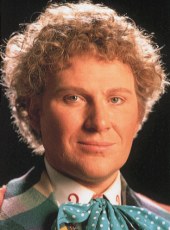 | | The Sixth Doctor |
|
|  | | The Second Doctor |
| | | | |
 | | Jamie McCrimmon |
|  | | Peri |
| 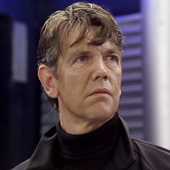 | | Lytton |
| | | | |
|
On Release | | The Collection Season 22 Limited Edition Blu-Ray Cover |

VIDEO |
| | 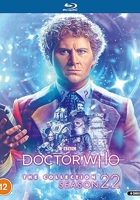 | | The Collection Season 22 Standard Edition Blu-Ray Cover |

VIDEO |
| | | | |
Magazines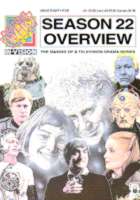 | | Doctor Who CMS Magazine (In Vision): Issue 85: Season 22 Overview |
|  | | Doctor Who Magazine - Episode Guide: Issue 121 |
| 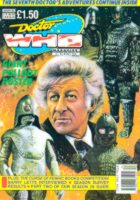 | | Doctor Who Magazine - Episode Guide: Issue 160 |
| 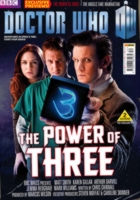 | | Doctor Who Magazine - Countdown to 50: Issue 452 |
| | | | |
|
|
|
| |
| |
|
| |
| |
|
| Doctor Who is the copyright of the British Broadcasting
Corporation. No infringements intended. This site is not endorsed by the BBC or
any representatives thereof. |
|